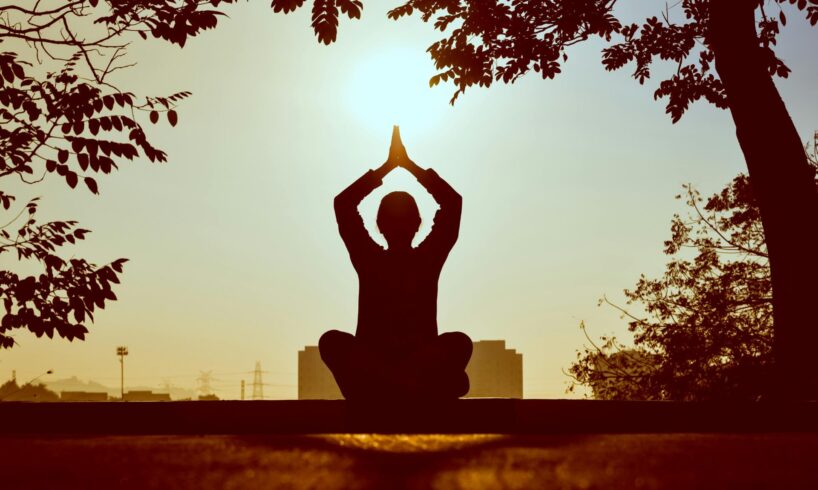
Apart from the cold, the winter season also brings with it laziness. Because of this, people start avoiding physical activity, even morning walks. Then their physical problems start from here. Yoga will not only help in warding off a cold, but its practice can also keep health problems at bay. So let us know what the benefits of doing yoga in the winter are and what the yoga asanas are to do in the winter.
How is yoga beneficial in the winter?
Although there are many yoga asanas for winter, here we are talking about some such asanas, which are considered beneficial to practice in the cold season.
If you are a fitness freak and want to know more about yoga poses, then you can join the 200-hour Yoga Teacher Training in Goa, India.
1. Keep the body warm.
In the winter season, practicing yoga can be a better option to maintain body heat. Actually, there are many yoga poses that, if practiced regularly, can help retain body heat.
Research related to this gives information that doing yoga asanas like Kapalbhati, Bhastrika Pranayama, and Surya Namaskar can create heat in the body. This is the reason why it can be beneficial to do yoga during the winter season to keep the body warm.
2. To prevent infection:
The risk of infection is believed to increase in cold weather. In such a situation, it is necessary to keep the immune system strong to prevent infection. In such a situation, yoga can play an important role in improving immunity. It is said that daily yoga practices, such as pranayama and meditation, can improve the immune system. In such a situation, it can be beneficial to include yoga in your routine to prevent diseases during the cold season.
3. For better blood circulation:
Doing yoga can also be beneficial for blood circulation in the cold season. Regular practice of yoga is said to improve the circulation of blood and other fluids throughout the body, which is important for a healthy life.
Actually, the circulatory system (which includes the heart, blood vessels, and blood) carries nutrients and oxygen to all cells in the body. In addition, the circulatory system also plays an important role in removing carbon dioxide from tissues and toxins from metabolism. This is the reason why it is necessary to have continuous circulation of blood in the body.
4. Relief from Joint Pain:
Generally, complaints of joint pain increase in cold weather, especially the problem of arthritis. At the same time, doing yoga can be beneficial to prevent it or reduce its symptoms. This information comes from research published on the website of the NCBI (National Center for Biotechnology Information), which states that doing yoga can reduce the symptoms of arthritis. At the same time, it can also help boost physical stamina.
5. Beneficial for Asthma:
Asthma is a disease related to breathing. It is believed that this problem gets worse during the cold season. In this case, the symptoms of asthma can be reduced by practicing yoga. Research on this topic has shown that asthma attacks can be reduced through yoga.
Plus, it can also improve the respiratory flow rate. Although more research is needed on this topic, yoga can be made part of the routine to reduce the symptoms.
6. For high blood pressure:
According to research published on the website of the NCBI, blood pressure increases in cold weather. Because of this, the risk of heart-related problems like stroke and heart failure also increases. At the same time, yoga can be a great option to reduce the risks of these problems. Indeed, yoga has been considered an effective remedy for the treatment of high blood pressure.
Apart from this, as we mentioned in the article, doing some types of yoga, such as Kapalbhati, Bhastrika Pranayama, and Surya Namaskar, can create heat in the body, so it would not be wrong to say that by keeping the body warm in cold weather, blood Doing yoga can prove beneficial for controlling pressure.
Yoga asanas to be done in the winter:
After knowing the benefits of yoga for winter, now it is time to learn about the yoga asanas to be done in winter. So here we are describing yoga for winter in a sequential manner and how to do them, which are as follows:
1. Bhastrika Pranayama:
The benefits of doing Bhastrika Pranayama in the cold season are many. As we mentioned in the article, Bhastrika Pranayama can generate heat in the body. In addition, it can be helpful in flushing out the toxins present in the body, which result from excess wind, pitta, and kapha. Not only this but along with removing diseases of the nose and chest, this pranayama is also considered beneficial for relieving swelling of the throat.
It is also mentioned in the information related to this that the problem of asthma can be reduced by the practice of Bhastrika Pranayama. In addition, it can also be helpful for weight loss. Therefore, practicing Bhastrika Pranayama can prove beneficial for staying healthy in the winter.
How to do Bhastrika Pranayama:
- First of all, after choosing a quiet place, lay a yoga mat and sit in the posture of Padmasana.
- Keep in mind that during this, both the spine and the head should be absolutely straight. Also, do not keep your mouth open at all.
- After this, take a deep breath through the nose, and the lungs should be fully expanded while inhaling.
- After taking a deep breath, exhale in one stroke, and the speed of exhalation should be so fast that the lungs contract with a jerk.
- In this way, one cycle of Bhastrika Pranayama is completed, and you can do this process 10 to 12 times.
Precaution :
- Always start Bhastrika Pranayama at a slow pace.
- Before doing Bhastrika Pranayama, clean the nose properly.
- People suffering from high blood pressure problems and heart disease should not do this pranayama.
- Pregnant women should also refrain from practicing this pranayama.
- Do Bhastrika Pranayama as many times as you can.
If you are a fitness freak and want to know more about yoga poses, then you can join 100-hour yoga teacher training in Rishikesh, India.
2. Paschimottanasana Yoga:
Cold weather can affect hormones related to hunger, leading to an increased desire to eat. At the same time, overeating can increase the problem of obesity. In such a situation, doing Paschimottanasana yoga can prove beneficial. Research on this suggests that regular practice of Paschimottanasana yoga with a balanced diet can reduce the problem of obesity.
How to do Paschimottanasana Yoga:
- First of all, lay a yoga mat on the ground, then sit with the legs spread forward.
- During this, keep in mind that both the legs are adjacent to each other and the knees are absolutely straight. At the same time, the head, neck, and spine should also be absolutely straight.
- After this, move both hands upwards and slowly bend forward while exhaling.
- Leaning forward, try to hold the toes with your hands. Simultaneously, keep the head close to the knee. During this, keep in mind that the knees should not bend.
- Now try to stay in this position for a few seconds and keep breathing at a normal pace.
- After 8 to 10 seconds, take deep breaths and return to your starting position.
Precaution :
- People having operations related to the back, waist, or any other part of the body should not practice this asana.
- If someone has an ulcer, asthma, or any other disease related to joints, then do not do this yoga.
- At the same time, if someone has a problem with diarrhea, then they should not practice this yoga.
- Apart from this, pregnant women are also advised not to do Paschimottanasana yoga.






